Ibercaja Estadio
| Capacity | 20 071 |
|---|---|
| Country | Spain |
| City | Zaragoza |
| Clubs | Real Zaragoza |
| Inauguration | 24/07/2025 |
| Construction | 01/2025 – 07/2025 |
| Cost | €5.6 M ($5.8 M) |
| Nicknames | Mini Romareda |
| Contractor | NUSSLI Group, Grupo MLN |
Advertisement
Ibercaja Estadio – stadium description
What is Ibercaja Estadio in a nutshell?
Ibercaja Estadio is a temporary stadium intended to serve Real Zaragoza for two seasons (2025/26 and 2026/27), during the demolition of the old La Romareda and the construction of a new, modern football venue on the same site. The new stadium is expected to host matches during the 2030 FIFA World Cup.
The temporary venue was built in the northern part of Zaragoza and consists of four independent stands made of provisional metal structures, with a total capacity of just over 20,000 spectators. The stadium is equipped with floodlights and a large video screen. Construction lasted about six months – from January to July 2025.
How did Ibercaja Estadio come about?
The construction of a temporary stadium in northern Zaragoza was directly linked to the demolition of the old La Romareda and the building of a modern venue in its place, planned to host matches during the 2030 World Cup.
Initially, the idea was to redevelop the stadium in stages – one stand at a time – allowing Real Zaragoza to continue playing at its traditional location throughout the entire process.
However, in spring 2024, an alternative plan emerged: to build a temporary stadium where the club could play during the reconstruction. This solution was expected to speed up the investment process. Eventually, this option was chosen.
When was Ibercaja Estadio built?
The stadium was commissioned by La Nueva Romareda SL, a company primarily responsible for building the new La Romareda. The company was established at the end of 2023 by three entities – the city council, the autonomous community of Aragon, and Real Zaragoza – which jointly finance its operations, including the construction of Ibercaja Estadio.
The construction of the temporary stadium was entrusted to a consortium made up of local company Grupo MLN and Switzerland-based NUSSLI Group. Building works began in January 2025 and were completed in July of the same year.
The Ibercaja Estadio design can be viewed on a dedicated subpage
How much did the construction of Ibercaja Estadio cost?
The contract is worth over €12.75 million and includes not only the construction of the stadium (which cost €5.6 million), but also its maintenance for two years and subsequent dismantling. Additional expenses related to the creation of Ibercaja Estadio include site preparation works worth nearly €2.6 million, as well as smaller auxiliary contracts.
What name was given to Real Zaragoza's temporary stadium?
Initially, the temporary stadium was referred to as Estadio Modular or Mini Romareda. On July 1, 2025, a sponsorship agreement was signed with Ibercaja, a bank headquartered in Zaragoza.
The contract, valid for 10 years, grants the bank naming rights for both stadiums. The temporary venue will carry the name Ibercaja Estadio, while the new La Romareda, once completed, will be called Ibercaja Romareda.
The bank will pay €1 million per year for naming rights, or €2 million per year if Real Zaragoza plays in La Liga.
When was Ibercaja Estadio inaugurated?
The stadium was officially inaugurated on July 24, 2025, during a modest ceremony attended by local politicians and invited guests, including athletes, businesspeople, and journalists. From July 25 to 31, the venue was opened to the public, allowing local residents to visit the new stadium free of charge.
The first match at Ibercaja Estadio was played on July 26 behind closed doors – it was an internal friendly between Real Zaragoza and their reserve team, Deportivo Aragón. The game ended 6–0 in favor of the first team. The first match with fans in attendance took place on July 30, when Real Zaragoza defeated CD Mirandés 2–0 in a friendly.
How long will Ibercaja Estadio be in use?
The temporary Ibercaja Estadio is directly linked to the complete reconstruction of La Romareda. That process began in the summer of 2024, but during the first season (2024/25), work focused solely on the southern stand, and Real Zaragoza continued playing their home matches at the stadium.
It wasn’t until the summer break of 2025 that the demolition of the remaining stands began, rendering the stadium unusable. The new La Romareda is expected to be completed by mid-2027, which means the temporary stadium will be needed for two full seasons (2025/26 and 2026/27).
La Nueva Romareda SL is responsible for the construction and management of Ibercaja Estadio. Although Real Zaragoza is one of its shareholders, the club formally rents the stadium from the company. The lease was signed for 26 months, with the option of extension in case of delays in the construction of the new venue.
What does Ibercaja Estadio look like?
The stadium has a simple layout with four freestanding stands along each side of the pitch, offering a total capacity of just over 20,000 spectators. The stands are made of metal structures and clearly have a temporary character. The first rows are located slightly above pitch level, allowing for better sightlines for spectators.
The main stand, which includes the VIP area and press box, is located on the western side. None of the stands are covered, although the design includes an option to install a roof over the main stand.
A 52 m² video screen has been installed in the south-east corner. Four floodlight masts have also been placed in each corner of the ground. The goals are equipped with extended, backward-stretching nets, a distinctive feature once associated with La Romareda.
Behind the main stand is a service building with basic facilities, including dressing rooms for players and referees. A dedicated fan zone has also been created around the stadium, featuring food stalls, restrooms, and a club store.
Who uses Ibercaja Estadio?
The stadium primarily serves as a temporary home for Real Zaragoza during the redevelopment of La Romareda. It may also be used for other purposes – one idea mentioned was the possibility of hosting a match of the Spanish women's national team.
Where is Ibercaja Estadio located?
The stadium is situated in the northern part of Zaragoza, around 4 km from the city centre – in a completely different location from La Romareda. It occupies the central area of a vast parking complex created for the 2008 Expo (Parking norte de la Expo).
The land where the stadium was built belongs to the autonomous community of Aragon. In the past, this site was considered as a potential location for a new, permanent stadium for Real Zaragoza.
In the immediate vicinity there is the Corona de Aragón athletics stadium, inaugurated in 2003, as well as football pitches managed by the Aragonese football federation. The area is close to the Ebro River and the A-2 motorway exit.
How Ibercaja Estadio compares to other LaLiga Hypermotion stadiums?
Advertisement
Pictures
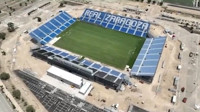
06.2025 © La Nueva Romareda 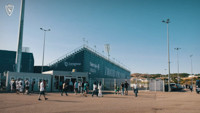
30.07.2025 © Real Zaragoza 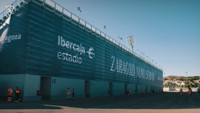
30.07.2025 © Real Zaragoza 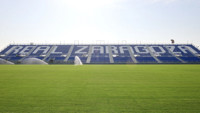
01.07.2025 © Real Zaragoza 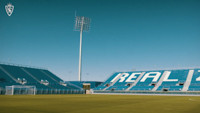
30.07.2025 © Real Zaragoza 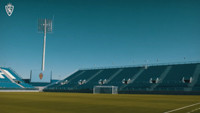
30.07.2025 © Real Zaragoza 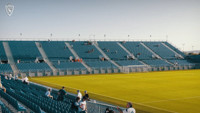
30.07.2025 © Real Zaragoza 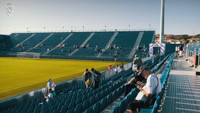
30.07.2025 © Real Zaragoza 
30.07.2025 © Real Zaragoza 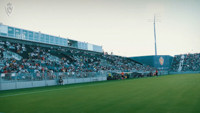
30.07.2025 © Real Zaragoza 
30.07.2025 © Real Zaragoza 
30.07.2025 © Real Zaragoza 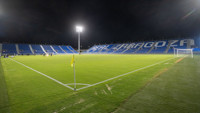
26.07.2025 © Ayuntamiento de Zaragoza 
30.07.2025 © Real Zaragoza 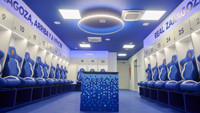
25.07.2025 © Real Zaragoza
Related news
2025
-
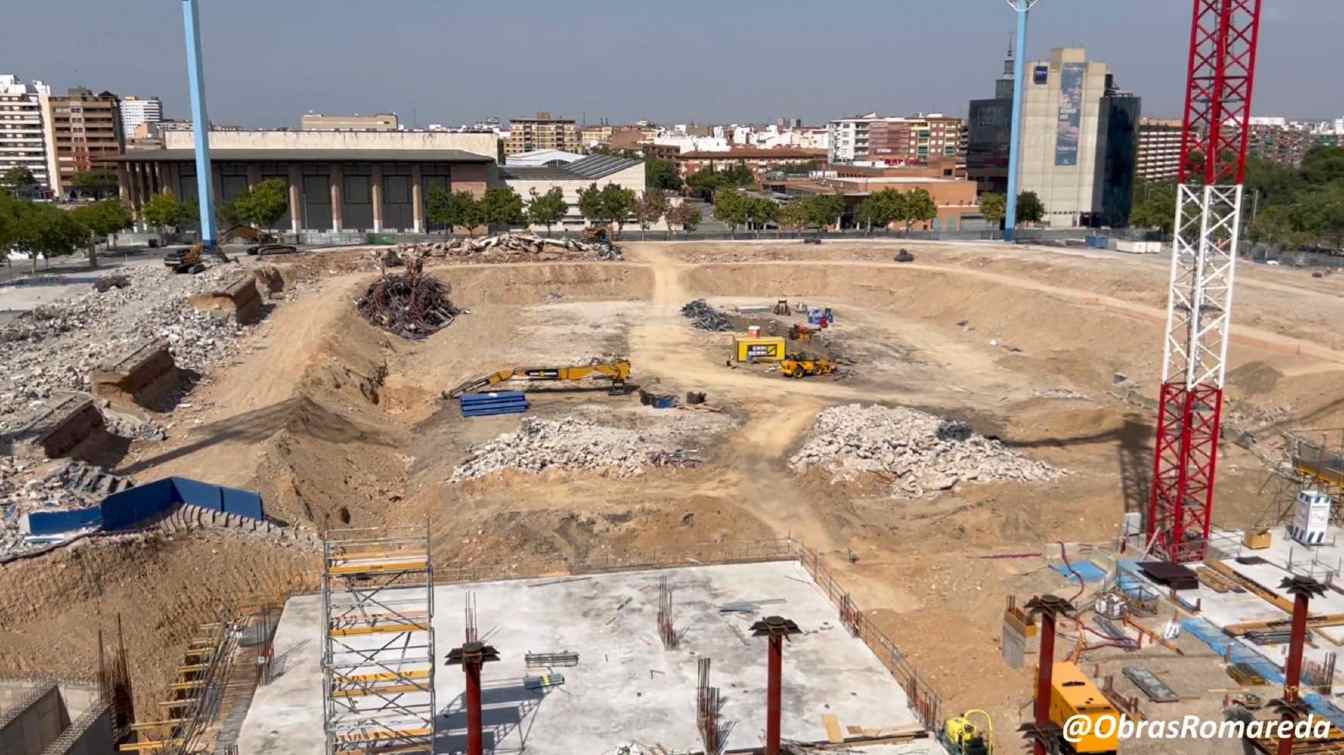
Spain: Lamp posts, the only thing left of the old Romareda
All that remains of the magical nights at La Romareda after its 68 years of history are the memories of the fans and the poles that used to light up the pitch. The demolition work is nearing completion, outpacing the work calendar by two weeks.
-
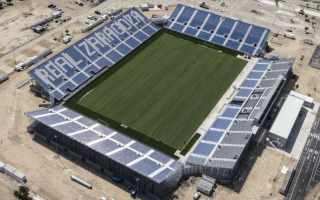
Spain: Beautiful, but shaky. Fans react to Real Zaragoza’s temporary stadium
Estadio Ibercaja has officially opened. While fans praise the comfort of the new venue, there has also been criticism — mainly concerning safety issues. On top of that, the debut match was played on a damaged pitch, made even worse… by rabbits.
-
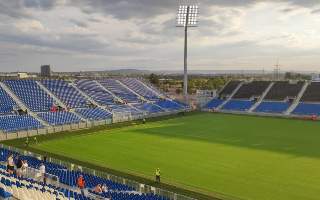
Spain: Record-fast build in Zaragoza and a unique opening
Real Zaragoza will inaugurate its new temporary stadium with free guided tours for residents and fans. The initiative will resemble the farewell event for the Gol Sur stand – all residents will be able to visit Ibercaja Estadio, built in record time and with a capacity of 20,000 spectators.

 StadiumDB
StadiumDB